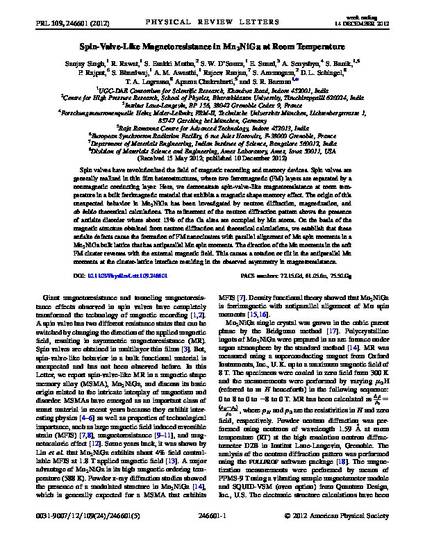
Spin valves have revolutionized the field of magnetic recording and memory devices. Spin valves are generally realized in thin film heterostructures, where two ferromagnetic (FM) layers are separated by a nonmagnetic conducting layer. Here, we demonstrate spin-valve-like magnetoresistance at room temperature in a bulk ferrimagnetic material that exhibits a magnetic shape memory effect. The origin of this unexpected behavior in Mn2NiGa has been investigated by neutron diffraction, magnetization, and ab initiotheoretical calculations. The refinement of the neutron diffraction pattern shows the presence of antisite disorder where about 13% of the Ga sites are occupied by Mn atoms. On the basis of the magnetic structure obtained from neutron diffraction and theoretical calculations, we establish that these antisite defects cause the formation of FM nanoclusters with parallel alignment of Mn spin moments in a Mn2NiGa bulk lattice that has antiparallel Mn spin moments. The direction of the Mn moments in the soft FM cluster reverses with the external magnetic field. This causes a rotation or tilt in the antiparallel Mn moments at the cluster-lattice interface resulting in the observed asymmetry in magnetoresistance.
Available at: http://works.bepress.com/thomas_lograsso/20/

This article is from Physical Review Letters 109 (2012): 246601, doi:10.1103/PhysRevLett.109.246601.